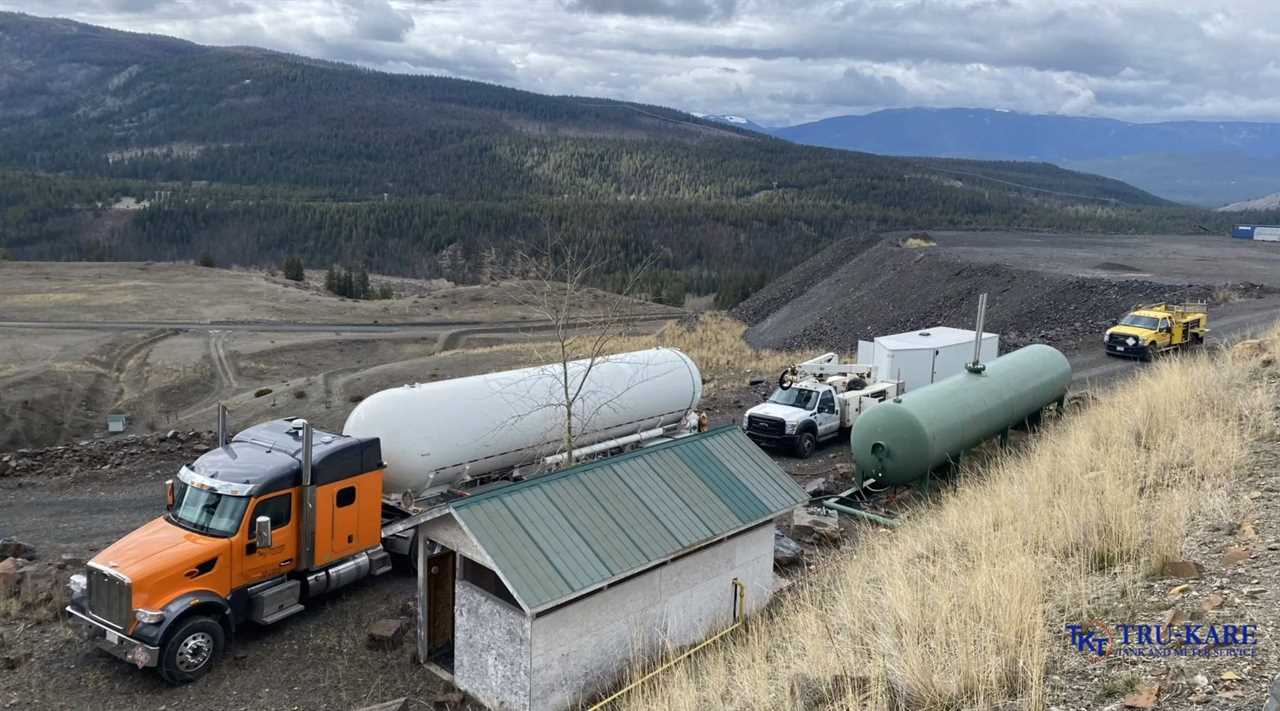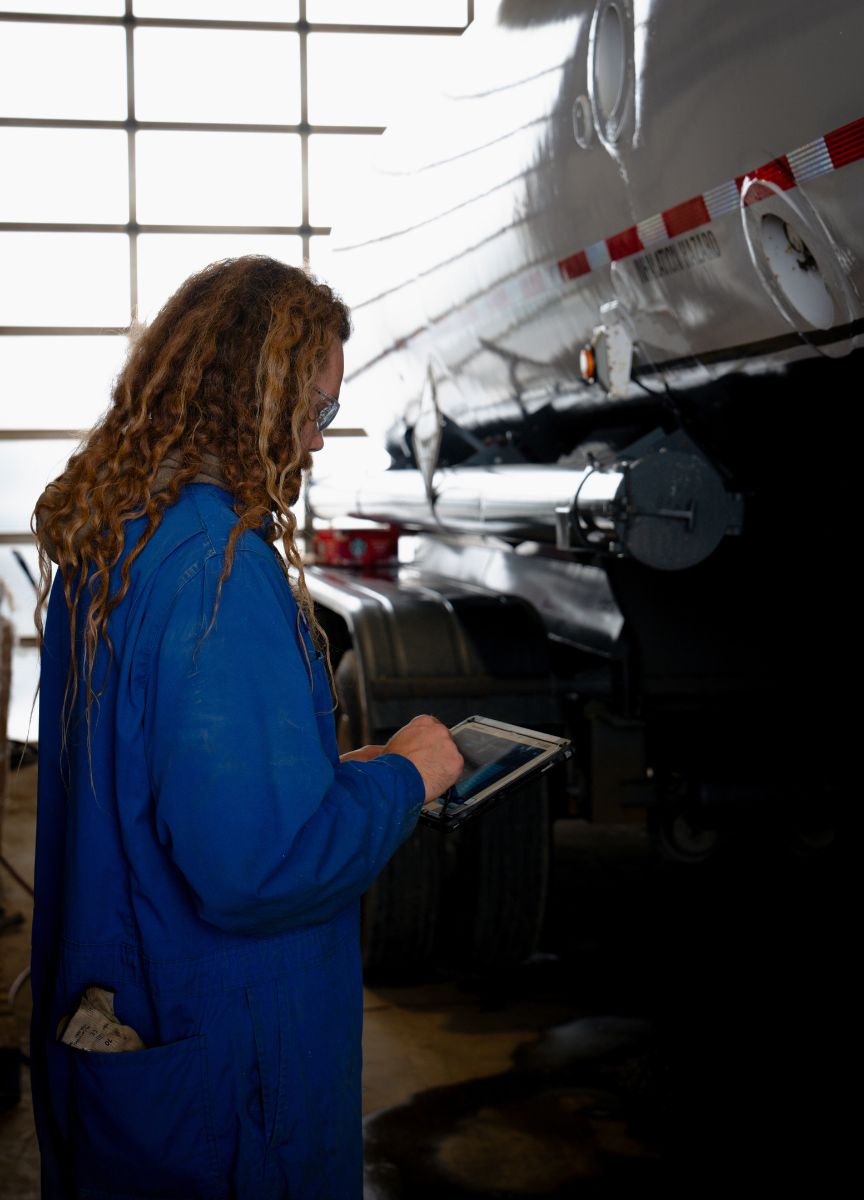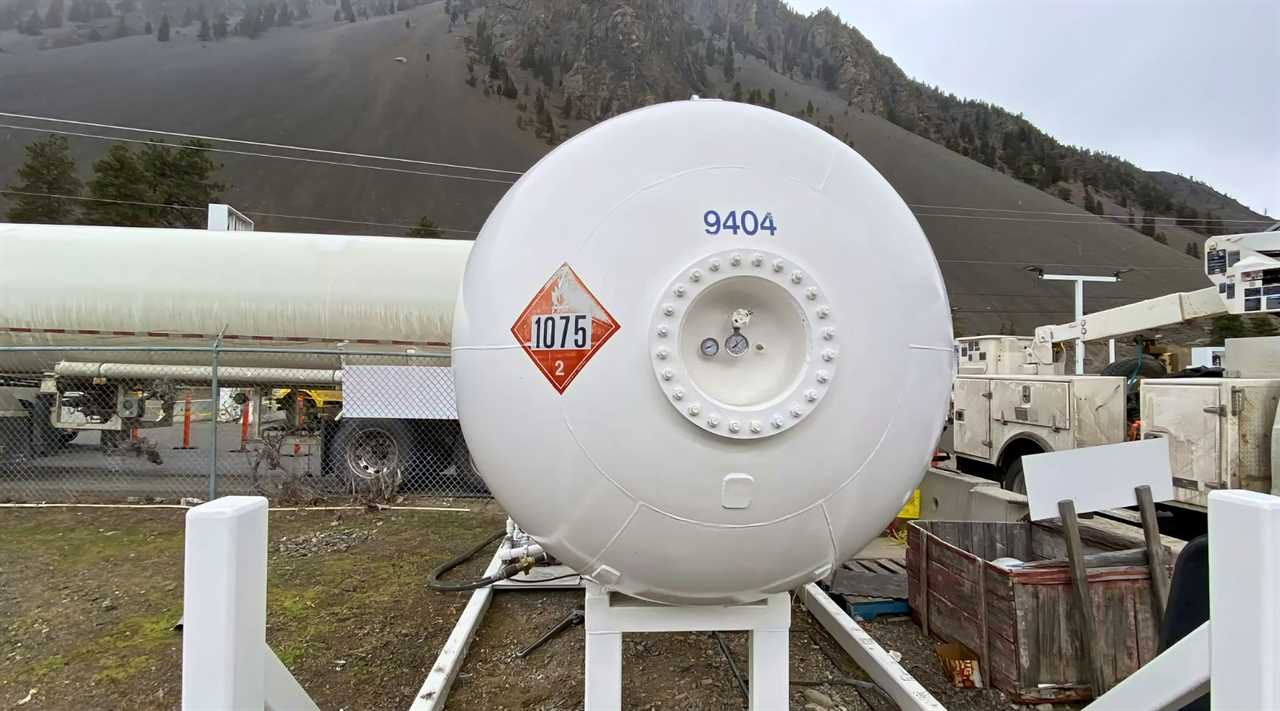In Alberta, you must inspect your propane storage tanks regularly to guarantee compliance with the National Fire Code and prevent costly fines, penalties, and potential safety hazards. You can use three smart methods to inspect your tanks: visual inspections to assess exterior surfaces for corrosion, rust, or damage; ultrasonic testing to evaluate structural integrity and detect corrosion and erosion issues; and leak detection systems to identify potential gas escapes. By incorporating these methods into your inspection routine, you'll be able to identify and address potential issues before they become major problems, guaranteeing your tanks remain safe and compliant.
Listen to the Article Summary
Key Takeaways
• Picture a propane storage tank leak causing damage and putting lives at risk in Alberta. Regular visual inspections are crucial in preventing such disasters by spotting leaks and ensuring safety.
• Imagine the devastating effects of undetected corrosion on a propane tank. Ultrasonic testing methods can identify these hidden issues, verifying the tank's structural integrity and giving you peace of mind.
• Envision an infrared image revealing a leak that would otherwise go undetected. Combining ultrasonic and infrared imaging in leak detection systems enhances safety and ensures regulatory compliance in Alberta propane storage.
• To guarantee comprehensive inspections, create customized checklists that address environmental and industry standards specific to Alberta. This meticulous approach safeguards against any potential threats to people and the environment.
• Think of annual pressure tests as a fire drill for your propane system. They uncover weaknesses or leaks, allowing you to address them before it's too late, which supports best practices in maintenance and regulatory compliance in Alberta.
• If you need expert assistance in implementing these smart inspection methods, or have any concerns about your propane storage tank, don't hesitate to contact Tru-Kare Tank & Meter Service for help.
Alberta Propane Storage Regulations
In Alberta, while operating a propane storage tank, you must comply with the National Fire Code (NFC) requirements, which include specific installation, removal, and operational protocols to guarantee safety. To ascertain compliance, you must follow the propane storage regulations outlined in the NFC, which cover aspects such as tank sizing, location, and fire protection.
You must also adhere to NFC compliance guidelines, which detail the permit application process, including submission of site plans and system information.
You are required to obtain an annual operating permit for propane storage tanks with a capacity of 2,500 liters or greater, which involves reporting site and system information yearly. To maintain environmental safety measures, you must confirm all components, including piping and connections, adhere to established safety codes, fitted with corrosion protection and containment measures.
Failure to comply with these regulations may result in regulatory enforcement actions, including fines and penalties. By following these guidelines, you can ascertain safe and compliant operation of your propane storage tank, minimizing environmental risks and potential hazards.
Regulatory compliance is essential for maintaining a safe and environmentally responsible propane storage facility.
Importance of Regular Inspections
How often do you inspect your propane storage tanks? Regular inspections are vital for identifying potential leaks and guaranteeing compliance with safety codes. You must adhere to the National Fire Code's mandate of routine inspections for storage tanks over 2,500 liters to maintain a valid operating permit and guarantee safety.
When you conduct regular inspections, you can verify that your tanks are equipped with necessary safety features, such as proper spill containment and corrosion protection. This helps prevent failures and guarantees operational safety.
Here are four key benefits of regular inspections:
- Improved Safety: Identify and address potential leaks, corrosion, or other issues before they lead to catastrophic incidents or environmental damage.
- Regulatory Compliance: Stay up-to-date with regulatory updates and maintain a valid operating permit by adhering to inspection schedules.
- Tank Maintenance: Regular inspections enable you to track the condition of your tanks and prioritize necessary repairs or maintenance.
- Skilled Personnel: Employ trained personnel to guarantee reliable assessments and take advantage of training programs to improve your team's knowledge in tank inspection and maintenance.

Visual Inspection Techniques
Effective visual inspections rely on a combination of thoroughness and attention to detail. When conducting a visual inspection of your propane storage tank, you'll want to assess the tank's aesthetics, looking for signs of corrosion, rust, or physical damage on both the exterior surfaces and surrounding areas.
Check for corrosion indicators such as discoloration, flaking, or pitting, which can indicate a more serious issue.
As you inspect the tank, don't forget to examine the connections, valves, and fittings for any signs of leaks, such as discoloration or residue. Confirm that all safety labels and warning signs are visible and legible, as they provide vital instructions and compliance information for safe tank operation.
Proper grounding equipment and corrosion protection measures, including cathodic protection systems, are also necessary for preventing electric corrosion. Validate that spill containment systems are intact and functional to prevent environmental contamination in case of leaks or spills.
Regular visual inspections, ideally conducted at a frequency determined by the manufacturer or regulatory requirements, help minimize environmental impact and maintain operational safety.
Ultrasonic Testing Methods
Utilizing advanced non-destructive evaluation techniques, you can assess the structural integrity of your propane storage tank with ultrasonic testing, a method that provides precise measurements of wall thickness and identifies potential flaws.
This technique is particularly effective for detecting corrosion and erosion, common issues that can compromise tank integrity over time. By employing advanced ultrasonic techniques, you can gather quantitative data on wall thickness, allowing for accurate assessments of remaining useful life and scheduling of necessary maintenance.
To guarantee accurate results, consider the following key factors:
- Equipment calibration standards: Verify that your ultrasonic testing equipment is calibrated to industry standards to affirm reliable measurements.
- Data interpretation methods: Use established methods to interpret data and identify potential flaws or weaknesses in the tank's structure.
- Training for inspectors: Certify that inspectors are trained and certified in ultrasonic testing to assure accurate results.
- Benefits of automation: Capitalize on automated ultrasonic testing systems to streamline the inspection process and reduce human error.
Leak Detection Systems
Your propane storage tank's leak detection system is a vital component of its overall safety and regulatory compliance. You must guarantee that your system can identify and respond to potential leaks, and you're required to have emergency plans and monitoring protocols in place to minimize risks associated with propane storage.
All aboveground and underground propane tanks need effective leak detection measures, including secondary containment for aboveground tanks and precision leak testing for underground structures.
Advanced technologies in leak detection can help you stay on top of regulatory updates and reduce the environmental impact of propane storage. Various detection methods, such as ultrasonic and infrared gas imaging, can pinpoint leaks before they become major issues.
Regular inspections and maintenance of leak detection systems are also essential to guarantee ongoing compliance and operational safety. You must document and maintain records of any leak detection testing, inspections, or repairs as part of compliance with provincial regulations and safety standards.
Safety Precautions for Inspectors

During inspections of propane storage tanks, safety precautions are of utmost importance to prevent accidents and guarantee compliance with regulations.
As an inspector, you must take proactive measures to minimize risks and secure a safe working environment.
To maintain a safe inspection process, follow these essential safety precautions:
- PPE Requirements: Wear personal protective equipment (PPE) such as gloves, goggles, and flame-resistant clothing to minimize exposure to flammable materials and hazardous substances.
- Ignition Sources: Remove all ignition sources from the inspection area to reduce the risk of fire or explosion.
- Emergency Procedures: Familiarize yourself with emergency shutoff procedures and the location of isolation valves to guarantee rapid response capability in case of a leak or emergency situation.
- Documentation Practices: Document all conditions and findings during inspections to maintain a thorough record for future reference and regulatory requirements.
Common Inspection Findings
Propane storage tank inspections often reveal a range of issues that can compromise safety and compliance with regulatory standards.
You'll commonly find corrosion on the tank's exterior and fittings, which can weaken structural integrity and impact safety. Inspectors frequently identify issues with improper tank installation, such as inadequate distance from ignition sources or insufficient clearance for maintenance access. This highlights the importance of following proper installation procedures to guarantee compliance with safety standards.
Leakage detection is also a critical focus area, as many tanks show signs of seepage around valves, seals, or damaged piping. Non-compliance with secondary containment requirements is another common finding, particularly in older installations lacking modern safety features.
These issues emphasize the importance of regular tank maintenance and the need to maintain accurate records of previous repairs and ongoing monitoring. By understanding these common inspection findings, you can better prioritize your maintenance efforts and guarantee regulatory compliance.
Regular inspections help mitigate corrosion impacts, ensuring your propane storage tank operates safely and efficiently.
Rectifying Inspection Failures
The tank owner's prompt response to inspection failures is essential in maintaining compliance with safety codes and regulations. Upon identifying a failure, you must conduct a thorough root cause analysis to determine the underlying reason for the issue. This analysis will inform the corrective action necessary to avert future failures.
To rectify inspection failures, consider the following steps:
- Review and revise maintenance procedures: Update your maintenance schedule to include regular testing of leak detection systems and guarantee proper functionality of safety equipment.
- Implement compliance training: Provide ongoing training to personnel on regulatory requirements, safety protocols, and inspection procedures to guarantee they understand their roles in maintaining compliance.
- Enhance inspection communication: Establish clear communication channels with inspectors and regulatory bodies to guarantee prompt notification of any issues and to facilitate efficient rectification.
- Stay up-to-date on regulatory updates: Regularly review and incorporate updates to safety codes and regulations into your maintenance and inspection procedures.
Maintenance Best Practices
Effective maintenance is vital for the safe and reliable operation of propane storage systems. To maintain the integrity of your propane storage tanks, you should perform regular inspections, including checking for corrosion, guaranteeing that tanks are equipped with proper spill containment mechanisms, and verifying the integrity of all piping and fittings to prevent leaks.
Employ innovative technologies like ultrasonic testing to evaluate wall thickness and structural integrity, and implement leak detection systems that monitor for any signs of gas escape.
You should also develop and follow inspection checklists customized for your specific propane storage system, considering environmental considerations and industry standards. Providing training programs for your personnel is important to ascertain they understand the importance of regular maintenance and can identify potential issues before they become major problems.
Additionally, conducting annual pressure tests on propane tanks helps identify any potential weaknesses or leaks in the system. By following these best practices, you can minimize risks, maintain operational safety, and secure compliance with regulatory standards.

Compliance and Documentation
As you prioritize maintenance best practices to guarantee the safe and reliable operation of your propane storage systems, it's just as essential to focus on compliance and documentation to avoid costly fines and reputational damage.
Staying up-to-date on regulatory updates, such as changes to the National Fire Code, is vital to confirm your systems meet the required standards. You must also maintain accurate documentation, including permits and inspection reports, to demonstrate adherence to regulations.
Some key compliance and documentation considerations include:
- Regulatory updates: Regularly review and update your compliance documentation to reflect changes in regulations or system conditions.
- Inspection frequency: Verify that inspections are conducted at the required frequency to prevent accidents and maintain operational integrity.
- Documentation templates: Employ standardized documentation templates to maintain consistency and accuracy in your records.
- Compliance challenges: Identify potential compliance challenges, such as audit preparedness, and develop strategies to address them proactively.
Frequently Asked Questions
What Are the Rules for Propane Tanks in Alberta?
In Alberta, specific propane safety guidelines and regulations must be followed, including tank leak prevention measures and environmental compliance protocols, to guarantee compliance with provincial regulations and ASCA requirements.
What Is the Inspection Code for Storage Tanks?
The inspection code for storage tanks in Alberta is governed by the National Fire Code and ASCA regulations, which require regular maintenance, adherence to safety standards, and compliance with environmental regulations, including pressure testing.
What Is a Smart Propane Tank?
A smart propane tank improves safety and maintenance through features like leak detection and real-time monitoring, ensuring compliance with storage regulations.
How to Look up a Propane Tank Serial Number?
To look up a propane tank serial number, check the metal plate near the valve or collar. This is also where you'll find information on tank models and propane tank history, which is crucial for safety compliance checks.
Conclusion
Picture a shield of safety surrounding your propane storage tanks, protecting your employees, the environment, and your business from the dangers of leaks and catastrophic failures. By using a combination of visual inspections, ultrasonic testing, and leak detection systems, you're building a fortress of compliance that meets Alberta's strict standards. You're not just checking boxes, you're safeguarding lives and the environment.
As you close the valve on a successful inspection, you're sealing in the integrity of your tanks and the peace of mind that comes with knowing you're doing everything right. If you need help ensuring your propane storage tanks are up to code, reach out to Tru-Kare Tank & Meter Service for expert guidance and support.


